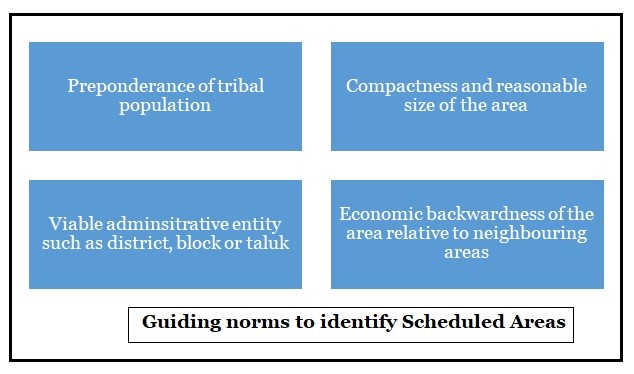Despite persistent demands by Adivasi organisations, 59% of India’s STs remain outside the purview of Article 244.
|
Status of Scheduled Tribes (ST) in India |
|
|
Article |
About |
|
366 (25) |
It defined scheduled tribes as "such tribes or tribal communities as are deemed under Article 342 to be Scheduled Tribes for the purposes of this constitution". |
|
342 |
The President may, with respect to any State (after consultation with the Governor) or Union territory, specify the scheduled tribes |
|
244 |
Application of the provisions of the Fifth Schedule and Sixth Schedule |
|
Fifth schedule |
It shall apply to the administration and control of the Scheduled Areas and Scheduled Tribes in any State other than Assam, Meghalaya, Tripura and Mizoram |
|
It shall apply to the administration of the tribal areas in Assam Meghalaya, Tripura and Mizoram. |
|
|
Educational, Economic and Public Employment Related Safeguards |
|
|
15 |
Prohibition of discrimination on grounds of religion, race, caste, sex or place of birth. |
|
16 |
Equality of opportunity in matters of public employment |
|
19 |
Protection of certain rights regarding freedom of speech etc., |
|
46 |
Promotion of educational and economic interests of Scheduled Castes (SC), STs and other weaker sections |
|
335 |
Claims of SCs and STs to services and posts |
|
Political safeguards |
|
|
330 |
Reservation of seats for SCs and STs in the House of the People |
|
332 |
Reservation of seats for SCs and STs in the Legislative Assemblies of the States |
|
334 |
Reservation of seats and special representation to cease after 60 years |
|
243 D |
Reservation of seats in Panchayats |
|
243 T |
Reservation of seats in Municipalities |
|
Agency for monitoring safeguards |
|
|
338A |
National Commission for Scheduled Tribe |
What is the place for ST communities in India?
The President of India notifies India’s Scheduled Areas.
Neither the Constitution nor any law provides any criteria to identify Scheduled Areas.

References